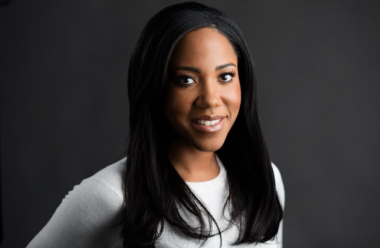The recent Presidential election ignited a national debate on gender and diversity in our country. Never before were topics such as how one of the candidates dressed [and I am sure you know I am not referring to the former Apprentice guy] prioritized over real issues. Although our country’s cultural, ethnic and racial battle has been an intricate part of our history — today, we have the opportunity to fuel real change where we live, work and play.
It’s time for industries such as mine to be as diverse as the clients that we serve and the brands that we represent. I talk often about the need to “Change Face of the Mad Man” in marketing and communications today — we are making great progress but still have a ways to go. At Ogilvy — for example — our top leaders including Global CEO John Seifert, OPR CEO Stuart Smith and Chief Diversity Officer Donna Pedro — are championing real change in our offices across the U.S. each and every day by creating new initiatives and programs as well as trainings aimed at leading by example for our entire industry.
Through my work at Ogilvy, I have had the opportunity to work with many organizations focused on creating a more gender equal and diverse workforce. One standout organization is ColorComm, a business community for women of color in communications. I recently had the opportunity to sit down with ColorComm’s President and Founder — Lauren Wesley Wilson, a true trailblazer and pioneer. In a short period of time, Lauren has brought together many of our industries leaders and most powerful brands to raise awareness of issues of diversity and more importantly, created a forum for people to network, get noticed and for brands to hire the next generation of talent. Below are some excerpts from that discussion.
What inspired you to create ColorComm?
When I finished grad school and joined the PR Industry, I noticed the lack of women of color in the communications industry and wondered if I was alone in that space. ColorComm was born as a simple observation as I attended networking events that didn’t have women like me so I organized the first luncheon series for professional women of color looking for a networking platform. From there, ColorComm has evolved from being a membership organization to a networking group to what it is today, a diversity platform catering to the communications industry capable of educating, training and equipping HR practitioners and professionals alike.
Have women of color seen a positive impact after attending ColorComm?
ColorComm has changed the professional lives of its members by providing them with a training platform outside work. In order to grow, you have to step out of your comfort zone and make the effort to attend conferences, events and functions to connect with industry players to learn from them and to enrich yourself from contributing to those groups as well. Although the percentage of women of color who are attending industry events today is relatively small, participation is steadily increasing as they see the positive impact network groups have in their careers. They feel supported by their employers and part of a bigger cause.
Why is it imperative for organizations and companies to support Diversity and Inclusion efforts?
I will say support ColorComm! Many companies just talk about the need for D&I but never follow through and some others do it really well. If you really want to do right, first you need to do an honest assessment of how many people of color make up your junior, senior and executive positions. Chances are the number will decrease as you go higher in the organization thus crippling the opportunity to have an inclusive environment. Individuals who are excelling in their roles should be nurtured, mentored, sponsored and given the opportunity to access training just as their counterparts. There should be a mechanism in place to nurture, mentor and sponsor individuals who are excelling in their roles as well as be able to create a healthy mix in entry, middle and C-level executives across these companies.
What is the most challenging part of your job?
Seeing that diversity is unfortunately not a priority. For some, it is the elephant in the room and for some organizations diversity is not even in their radar. D&I needs to be a priority and companies need to live it in order to promote people from within and reflect it externally with their clients.
What would be the next step for companies and organizations that have invested on diversity?
Making sure you are doing it right across the board. Not just for women, or women of color but throughout the entire organization. This is not just employee focus; this is client focus, the campaigns, and teams working from within bringing diverse life styles, perspectives, past experiences and cultures to benefit our clients, their customers, and their brands. Companies and organizations should make sure that their teams are a reflection of what they are, what they believe. When companies focus on building diversity by focusing on a single dimension like gender, ethnicity, sexual orientation they have missed the point of diversity. Diversity and inclusion must go hand in hand.
This article first appeared on oglivydo's site.
Newsletter
Enjoy this? Get more.
Our monthly newsletter, The Edit, curates the very best of our latest content including articles, podcasts, video.
Become a member
Not a member yet?
Now it's time for you and your team to get involved. Get access to world-class events, exclusive publications, professional development, partner discounts and the chance to grow your network.




